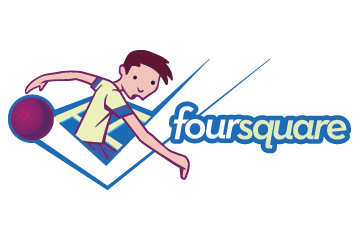– June 28, 2010
 It’s amazing what you can learn online to help your claim
It’s amazing what you can learn online to help your claim
Undoubtedly, you’ve read plenty of articles or have been to numerous presentations regarding the use of social media to investigate claimants. At this point, the novelty of Facebook and MySpace has worn off. The same can be said about Twitter. Everyone knows at this point to take a look at those platforms when searching a claimant’s background. Enough said. However, seemingly with every new day comes a new social media application. One relatively new application that you should also take a look at during your claims investigation is Foursquare.
What is Foursquare?
Foursquare is a web and mobile application that allows users to connect with friends and update their location. To use the application, a user must register at foursquare.com and create an account. This account records the users’ activities from there on.
Foursquare started out in 2009 with limited availability in only 100 worldwide metro areas. In January 2010, Foursquare changed their location model to allow check-ins from any location worldwide. As of March 2010, the service had 500,000 users. As June 2010, Foursquare has closed in on 1.3 million users in June 2010. Thus, this is an application that is quickly picking up adopters.
Foursquare is part game, part micro blog, part status-update tool, and part vehicle for sellers of goods and services to award customer loyalty. “Checking in” via Foursquare at venues can lead to special offers and deals from a participating venue. “Checking in” can also lead to “badges” for users, which are displayed on the user’s Foursquare profile. An example of a Foursquare badge includes the “Crunked” badge, which is awarded for checking into four bars/clubs in a given night.
Users can choose to have their Twitter and/or their Facebook accounts updated when they “check in.” Alternatively, users can opt not to publish their “check ins.” Nevertheless, all activity – whether published or not – is recorded on the users’ Foursquare account.
How looking to Foursquare can help investigate your claim
Accordingly, in the course of claims investigation, an enterprising analyst can search a user’s Facebook account, Twitter account, or Foursquare account to investigate the users’ Foursquare activity. To so, the attorney would either need access to an open Facebook and Twitter profile, or alternatively, have access to the users’ login and password information for each of these accounts. Getting access to login and password information may likely only come once a claim enters litigation. At that point, defense counsel can either issue a subpoena to Foursquare or attempt to secure the data via interrogatory.
A real life claim example
The value of Foursquare can be realized in a very tangible way when investigating a user and his or her activities. For example, here is a recent Twitter feed of someone in Columbia, South Carolina on a recent Friday night using Foursquare:
I’m at Salty Nut (2000 Greene St, Columbia). http://4sq.com/5qUeGw about 7 hours ago via foursquare from Five Points, Columbia
I just unlocked the “Crunked” badge on @foursquare http://4sq.com/c93hnL about 7 hours ago via foursquare
I’m at Pavlovs (2000B Greene Street, Columbia). http://4sq.com/aLjSsL about 7 hours ago via foursquare from Five Points, Columbia
I’m at Dr. Rocco’s (801 Harden St, at Greene St, Columbia). http://4sq.com/bzIMAA about 8 hours ago via foursquare from Five Points, Columbia
I hate stupid mofos downtown who try and fight. I’m not as drunk as you, and therefore I will beat your about 8 hours ago via UberTwitter
Greene and Harden Streets are in Columbia’s “Five Points” area, which is home to many bars and nightclubs frequented by students at the nearby University of South Carolina. The locations where this user stated he was “checking in” on Foursquare are all college bars.
In this feed, we know this: the user visited numerous bars in Columbia’s Five Point areas and stated he is “drunk.” Imagine if this user later was involved in an incident where injuries occurred, which later becomes a claim to the carrier. If he were the prospective defendant involved in an automobile accident (and an insured of the carrier), we’d know we have the makings of a tough claim. If he were the prospective plaintiff alleging a claim against the carrier (e.g., he got into a fight with an insured later that night), we’d likely have the beginnings of a compelling comparative negligence defense.
Other things that can be learned by Foursquare
An additional use for Foursquare is finding out what a claimant has been up to since an incident giving rise to a claim. Imagine this claimant gave a recorded statement or testified in deposition that he or she had been devastated by his or her accident and couldn’t go out and enjoy life. What do you think the value of the claim would be when his or her Foursquare profile revealed routine “check ins” to Starbucks, the local mall, and other places that demonstrated that perhaps life wasn’t so bad for the claimant? Every little bit helps when investigating a claim such as this. The chance exists that Foursquare can help you find out more about a claimant’s post-accident lifestyle.
Bottom line: Don’t forget Foursquare when investigating a claimant’s social media activities.

 Linkedin
Linkedin Twitter
Twitter
0 Responses
Stay in touch with the conversation, subscribe to the RSS feed for comments on this post.